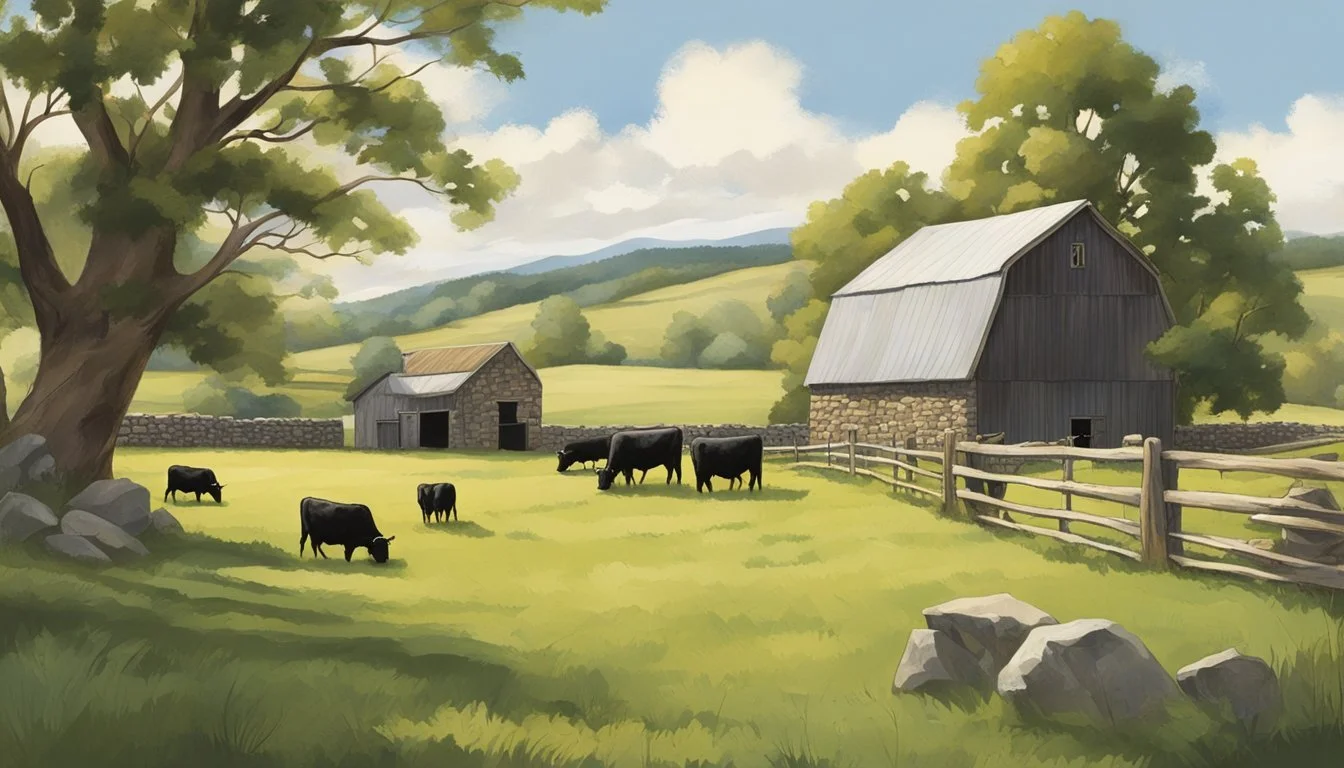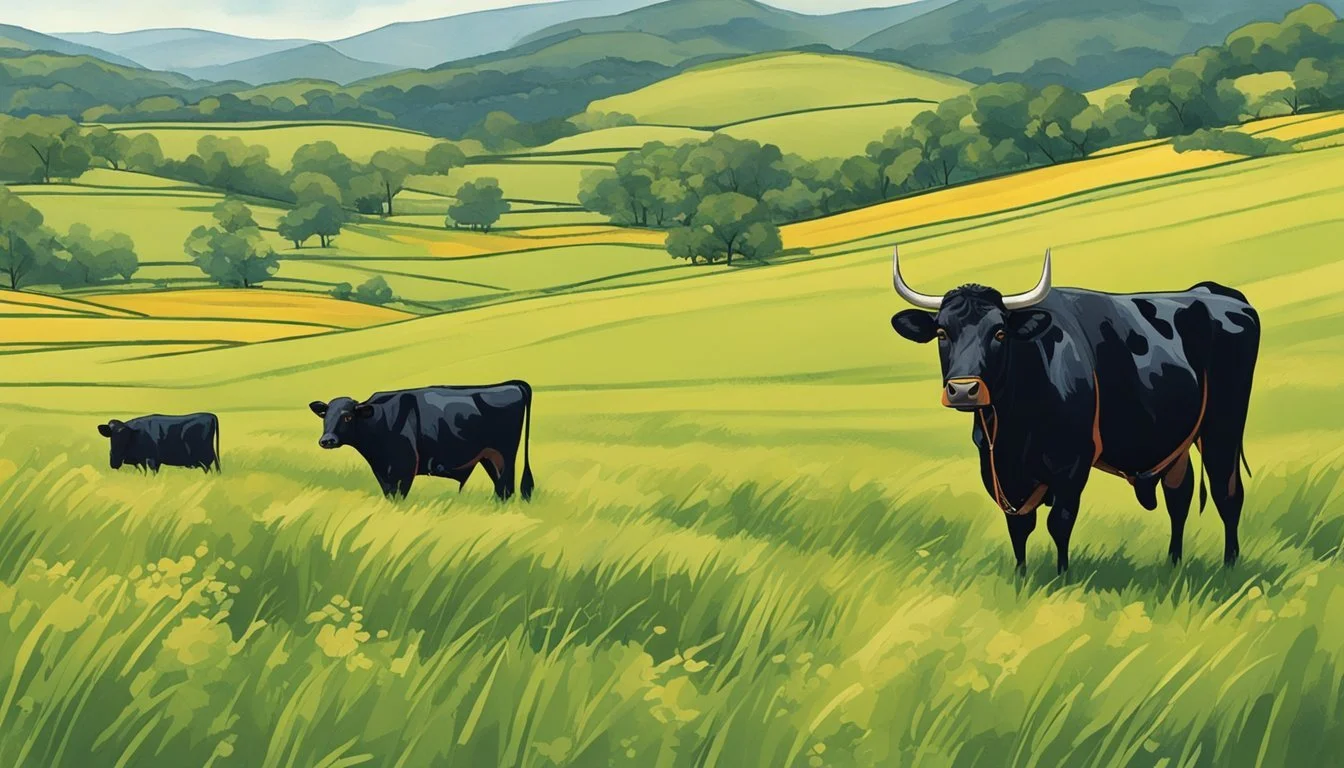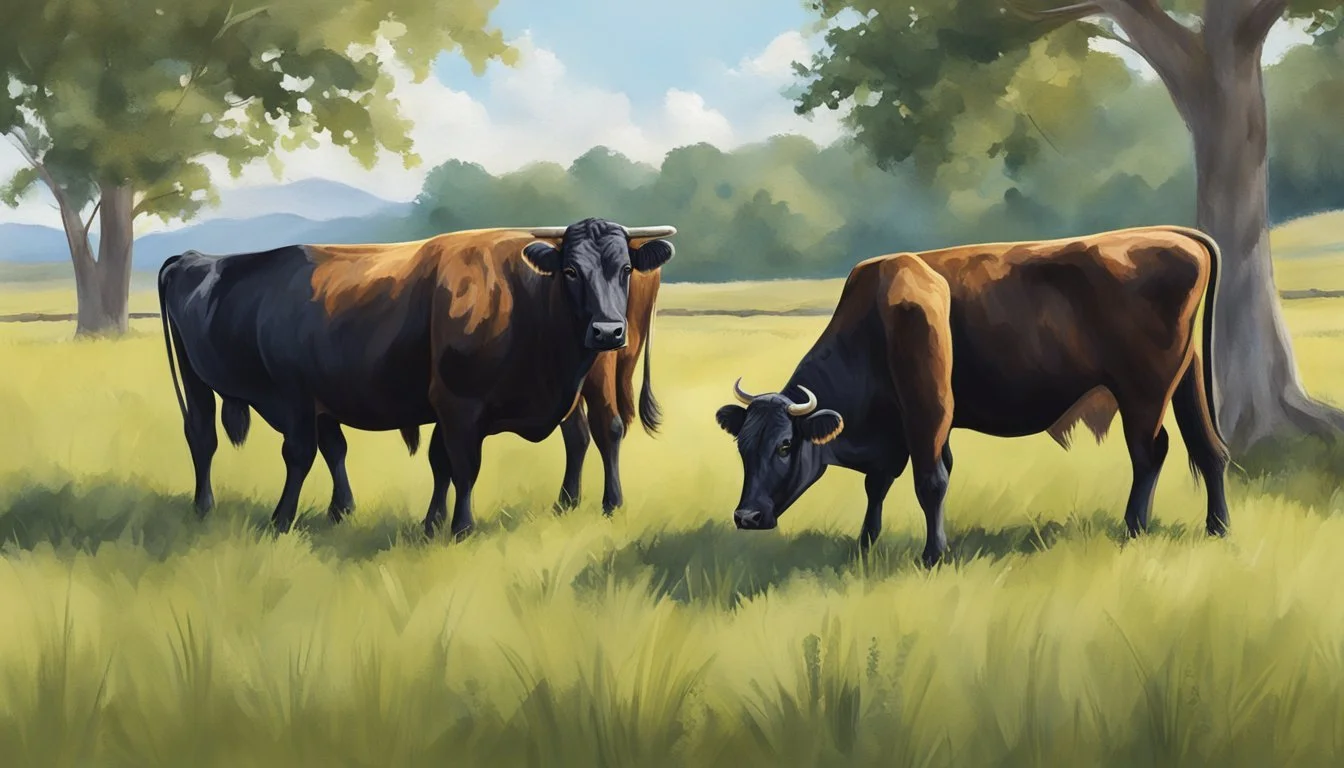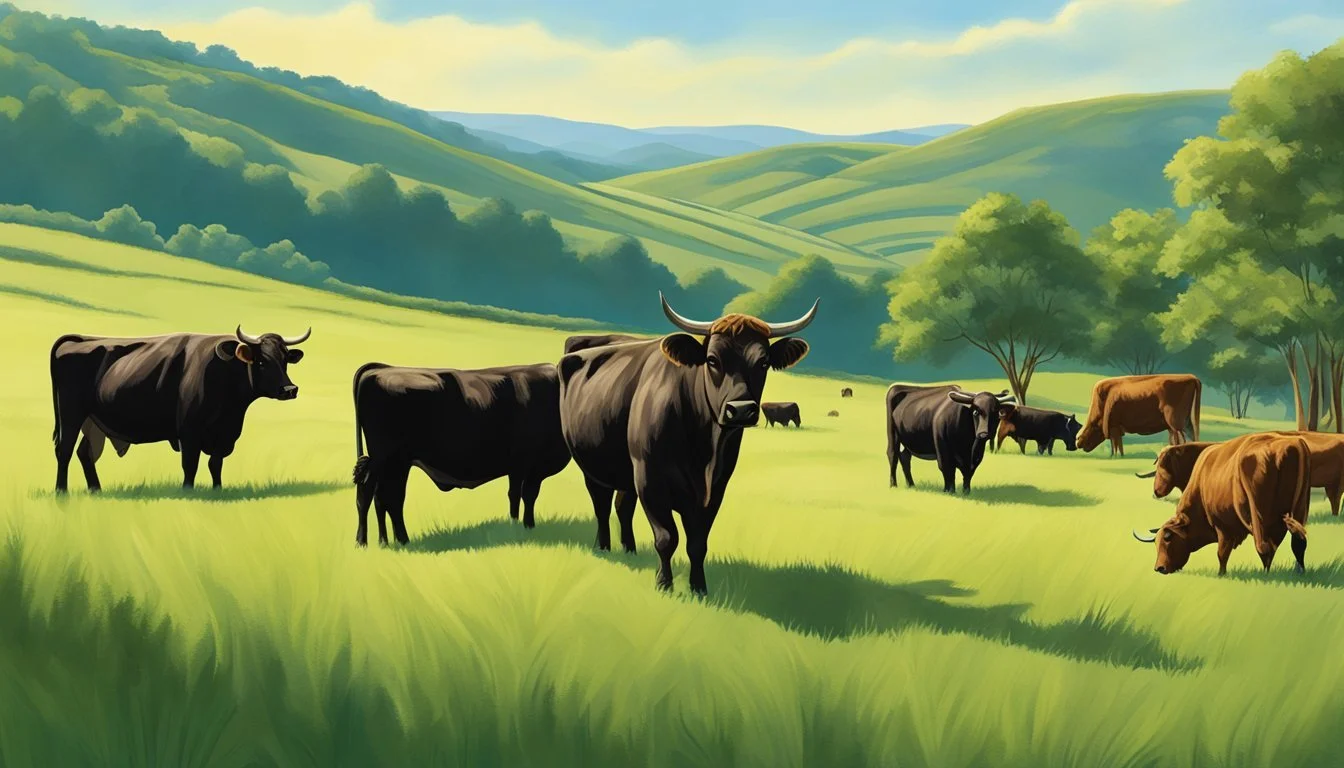Creating a Dexter Cattle Heritage Breed Conservation Plan
Essential Strategies for Preservation
Dexter cattle, a breed of small domestic cattle originating from the south-western region of Ireland, have become a subject of growing interest in heritage breed conservation. With their lineage dating back to herds managed by Mr. Dexter in the 18th century, these animals are appreciated for their compact size, hardiness, and dual-purpose utility, providing both milk and meat. In the mid-20th century, the breed witnessed a decline in numbers, raising concerns among conservationists and farmers about the preservation of their genetic diversity.
The interest in conserving Dexter cattle as a heritage breed is reflective of a broader movement to maintain agricultural biodiversity. Heritage breeds like the Dexter are more than just livestock; they represent a living legacy of traditional farming practices and a reservoir of genetic traits that may prove crucial for sustainable agriculture. Conservation plans are not merely aimed at preventing extinction but are strategic efforts to ensure the vitality and genetic health of these breeds for future generations.
In developing a conservation plan for Dexter cattle, it involves a multifaceted approach that includes establishing breed registries, monitoring genetic diversity, and promoting the breed through education and engagement with farmers, smallholders, and the public. The plan seeks to balance the need for maintaining genetic purity with the practical aspects of keeping the breed viable in modern agricultural systems. Through careful management and community support, the conservation of Dexter cattle can maintain an essential link to our agricultural heritage and a sustainable future.
Historical Context of Dexter Cattle
Dexter cattle hold a significant place in agricultural history, originating in Ireland and later spreading across Europe and to the Americas. Noted for their versatile size and hardiness, Dexters have faced conservation challenges but have benefited from dedicated organizational support.
Origins in Ireland
Dexter cattle trace their roots to Ireland in the 18th century. Originally considered a type within the Kerry cattle breed, their compact size and efficient meat production marked them as distinctive. Their official recognition came in the form of the first herd book record in 1892, solidifying their status as a breed in their own right.
Spread Across Europe
By the early 20th century, Dexter cattle had caught the attention of enthusiasts in Europe. The profile of Dexters rose with the formation of the Dexter Cattle Society in England in 1924. As of 1926, volumes of herd books documented 986 bulls and 3,896 cows, reflecting the breed's growing proliferation.
American Dexter Cattle Association and Global Influence
The American Dexter Cattle Association, established in 1957, marked a significant milestone for Dexter cattle in the United States. It represented a resurgence of interest after nearly facing extinction in the mid-1970s. The association played a critical role in Dexter cattle promotion and the renewal of British Dexter importation.
Conservation Status and Initiatives
Dexter cattle have been classified as a heritage breed, and while they are not on the endangered list, they require monitoring. Conservation initiatives are paramount to ensure their survival, with organizations like The Livestock Conservancy listing them on the conservation priority list. These efforts ensure Dexters remain part of modern farming and biodiversity.
Physical Characteristics of Dexter Cattle
The Dexter cattle breed is known for its hardiness and distinctive physical attributes adapted for conservation breeding programs. These cattle exhibit variations in size and weight, and display unique color patterns that set them apart from other breeds.
Size and Weight Variations
Dexter cattle are classified as a small to mid-sized breed. Cows typically stand between 36 and 44 inches tall at the shoulder and can weigh up to 750 pounds. Despite their smaller stature, they are known for their efficiency and hardiness. Both bulls and cows are muscular with well-rounded hindquarters, and can exhibit both short and long legs.
Color Patterns
Coat color in Dexter cattle can vary. They often have a short and thick coat that commonly appears in black, dun (a pale brown), and red hues. While most Dexter cattle are solid in color, excessive white markings, spotting, or brindling are not typical. The breed can be both horned and polled (naturally hornless). Horned individuals have short and moderately thick horns that extend laterally from the head. Through selective breeding, polled Dexter cattle have become more prevalent.
Behavioral Traits and Temperament
When considering a conservation plan for Dexter cattle, understanding their behavioral traits and temperament is crucial. These aspects are integral to managing the breed effectively and ensuring their wellbeing.
Docility and Mothering Instincts
Dexter cattle are renowned for their docile nature, which makes them particularly suitable for smaller farms and those new to cattle ranching. Their calm demeanor is often highlighted, contributing to ease of handling and management. Dexter cows exhibit strong mothering instincts, often displaying protective behaviors towards their calves. This natural inclination ensures the survival and continued lineage of this heritage breed.
Foraging and Grazing Habits
Dexter cattle are efficient foragers, known to thrive in varied pasture conditions, including rough vegetation and diverse grasslands. They possess a natural ability to convert less than ideal pasture into nutritious milk and meat. Their grazing habits are an asset in conservation, as they can maintain and improve pasture health by managing plant growth and promoting biodiversity.
Breed Utilization and Management
In devising a conservation plan for Dexter cattle, it is crucial to address their versatility in farming, the benefits of their modest size for small-scale operations, and their attributes as dual-purpose livestock. Effective management practices ensure optimal health and productivity, furthering the breed's sustainability.
Dual-Purpose Use for Meat and Dairy
Dexter cattle are esteemed for their dual-purpose capabilities, yielding both quality beef and substantial dairy output. Despite their relatively small stature, they provide a quantity of meat comparable to larger breeds on less feed, making them an economical option for farmers. In dairy production, they're known for the rich cream content of their milk, which can be utilized for cheese-making and other dairy products. Dexter cattle serve as a resourceful option for diversified farming operations.
Dexter as a Conservation Grazing Tool
The Dexter breed plays an instrumental role in conservation grazing, aiding in the management of grassland ecosystems. Their grazing habits promote biodiversity and can be a vital component in rewilding efforts. By carefully managing grazing patterns, Dexter cattle help to maintain a variety of flora and fauna, thereby supporting ecological balance and habitat restoration.
Livestock Breeding and Fertility
Breeding strategies for Dexter cattle prioritize fertility and calving ease, important considerations for maintaining herd vitality. Bulls should be selected for their ability to sire calves with minimal birthing complications. Dexters generally have good fertility rates, and attentive breeding practices can reduce the incidence of genetic conditions like dwarfism, ensuring a robust and breeding-capable livestock population.
Health Considerations and Veterinary Care
Regular veterinary care is important to monitor and maintain the health of Dexter cattle, focusing on areas specific to the breed such as the condition of udders and the umbilicus in calves. Preventative measures, such as vaccinations and parasite control, alongside routine examinations, are key to preventing diseases and addressing any health concerns promptly. Dexter cattle's hardiness and adaptable nature contribute to their overall well-being when managed effectively.
Cultural Significance and Community Engagement
The Dexter cattle breed embodies a rich narrative of heritage and tradition in farming practices. Its revival and conservation engage communities, intertwining their shared history and sustainable agricultural methods.
Traditional Farming Practices
Dexter cattle, recognized as Europe's smallest cattle breed, have been integral to Irish farming traditions for centuries. Stakeholders, including farmers and breed associations, preserve these traditions through the employment of artisanal methods rooted in heritage breed conservation. They focus on sustainable practices that respect the land and the genetic integrity of the Dexter breed.
Communities involved in Dexter cattle farming place great importance on maintaining historical narratives that encapsulate the breed's story. By doing so, they ensure that the cultural heritage associated with Dexters continues to thrive and enrich modern society. This synergy between past and present is pivotal to fostering a robust conservation strategy for the Dexter cattle, ensuring they remain a living embodiment of farming heritage and ecological harmony.
Conservation and Sustainability
Conservation and sustainability are essential in maintaining not only the Dexter cattle breed but also the broader genetic diversity of livestock breeds. Focusing on gene preservation and sustainable breeding practices, conservation efforts aim to ensure long-term viability of the breed.
Maintaining Genetic Diversity
To maintain genetic diversity, conservation of Dexter cattle involves several strategies. These strategies include:
Breed clubs and associations: These organizations, like the American Dexter Cattle Association, play a crucial role in genetic resource conservation. They promote sustainable breeding programs and give guidance on maintaining the wide genetic base necessary for the breed's health and viability.
Genetic resource repositories: Gene banks and other repositories are established to store genetic material, ensuring diversity is retained for future use in breeding and conservation programs.
Sustainable livestock management: Encouraging small-scale farming and grazing practices that maintain biodiversity, contribute to ecosystem health, and allow natural behaviors, which can benefit genetic diversity.
Heritage Breed Registration and Documentation
Accurate breed registration and comprehensive documentation ensure the integrity of the Dexter cattle breed. Important aspects include:
Breed registration: Registering livestock through recognized breed clubs or associations is paramount. Registration data includes pedigree information, which helps track genetic lines and prevent inbreeding.
Classifieds and advertising: Dexter cattle owners use classifieds to buy and sell registered animals. These classifieds are cushioned with stringent breed standards to ensure quality and preservation of genetic traits.
Maintaining accurate records and a reliable registration system is a core element in the conservation and sustainability of heritage livestock breeds like Dexter cattle.
Strategy for Dexter Cattle Heritage Breed Conservation
The conservation of Dexter cattle as a heritage breed involves creating a robust plan, engaging community and consumer support, and implementing effective monitoring and evaluation techniques.
Creating a Conservation Plan
The first step in preserving the Dexter cattle breed is to develop a thorough Conservation Plan. Key components should include:
Genetic Diversity Preservation: Maintain a diverse genetic pool to ensure the breed's long-term health and resilience.
Habitat Management: Utilize rewilding strategies where Dexter cattle can thrive in conditions that mimic their natural environment, contributing to ecosystem restoration.
Collaboration with Breed Clubs: Work with organizations like the American Dexter Cattle Association and the Dexter Cattle Society to support breeding programs that follow best practices for genetic health.
Community Participation and Consumer Education
Community engagement is essential for the success of heritage breed conservation. Strategies include:
Public Awareness Campaigns: Use various media platforms to educate the public on the importance of biodiversity and heritage breeds.
Local Community Involvement: Encourage local farmers and landowners to participate in conservation efforts, offering incentives where possible.
Promotion of Dexter Products: Market Dexter cattle products to consumers, highlighting their quality and the role of consumer choices in supporting heritage breeds.
Techniques for Monitoring and Evaluation
Monitoring and evaluation ensure the conservation strategy remains effective and adaptive.
Regular Genetic Testing: Conduct assessments to monitor genetic health and diversity within the Dexter cattle population.
Data Collection from Breeders: Collect and analyze breeding data regularly to identify trends and potential genetic bottlenecks.
2021 Poultry Census Comparison: While not directly related to cattle, draw from techniques and outcomes of initiatives like the 2021 Poultry Census to inform evaluation methodologies that can be applied to conservation efforts for Dexter cattle.
Conclusion
The Dexter cattle breed represents a critical link to agricultural heritage and biodiversity. Preservation efforts are vital for maintaining genetic diversity and the breed's unique qualities. The American Dexter Cattle Association has been at the forefront of these efforts since its establishment, showcasing a commitment to ensuring the breed's longevity.
To support conservation initiatives, farmers and breeders are encouraged to participate in sustainable breeding programs. They aim for not only the preservation of Dexter cattle but also the promotion of their numerous benefits. These benefits include their compact size, hardiness, and suitability for conservation and rewilding projects.
Heritage breeds like Dexter cattle contribute significantly to the resilience of local food systems. Their adaptation to specific climates and grass-based dairying makes them invaluable. The Livestock Conservancy provides guidance and support in these endeavors, emphasizing the importance of these breeds in a broader context of environmental conservation.
In conclusion, the united efforts of associations, conservancies, and individual breeders are essential to the ongoing success of Dexter cattle conservation. Their collaboration ensures that these heritage breeds continue to thrive for future generations. The preservation of Dexter cattle is not merely a nod to tradition but a strategic step toward sustainable and diverse agricultural practices.
Conservation Highlights:
Heritage Breed: Dexter cattle
Key Organizations: American Dexter Cattle Association, The Livestock Conservancy
Conservation Goals:
Genetic diversity maintenance
Promotion of breed-specific advantages
Support for sustainable agricultural practices










